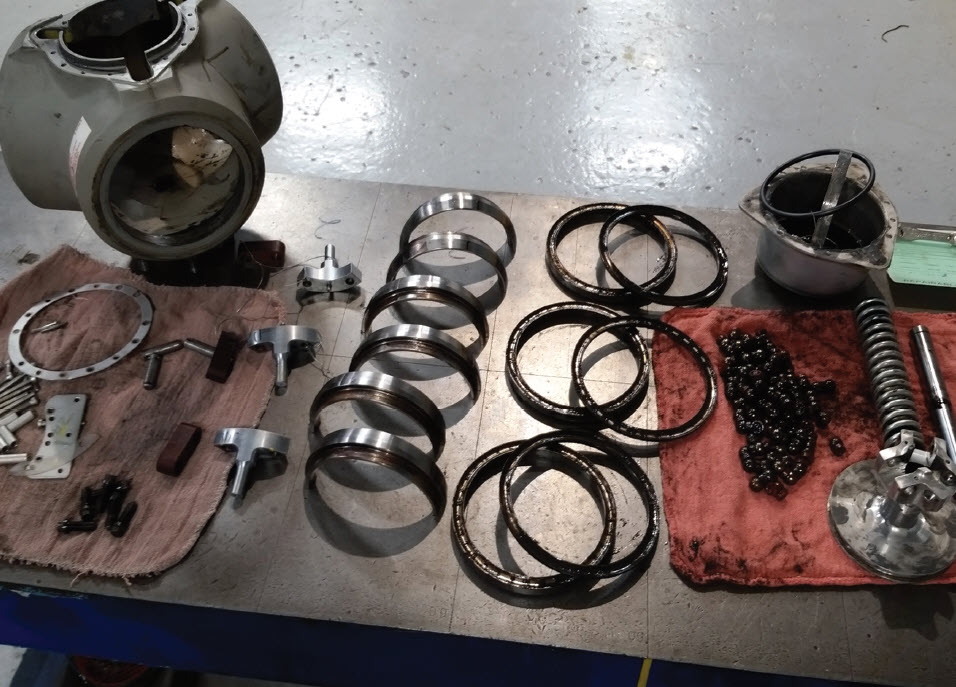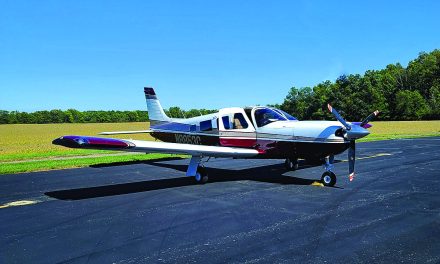This is my eighth airplane and I’ve restored almost all of them to like-new condition.
Restoring an older airplane to like-new condition is a major labor of love and, well, money. But not nearly as much money as buying a new airplane. Most of us consider buying a new car every half dozen years or so in the neighborhood of $30,000 and we consider that to be a big financial deal. Given that mindset, buying a new airplane even once in our lifetime is not likely to happen. And, frankly, it shouldn’t. To buy an airplane costs two to three times what many of our houses cost, which doesn’t make much sense. So, to buy an airplane in the range of $25,000 to $100,000 and then restore it to like new condition is a much more reasonable thing to do, especially since our Pipers are still in manufacture and all of the parts needed are generally available as new or new-surplus.
I purchased my Arrow in 2018 and 2019 was my first full year flying it and working on it. The panel had already been upgraded with modern avionics and except for installing an EI Super Clock, vertical card compass, and swapping out a Garmin 650 for an Avidyne 540, it was perfect. No attention needed there, just fly it! The airframe and engine were perfect, too. So here we are in year two and it’s time to restore the interior. The headliner was vintage 1977 and while it was still firmly attached to the ceiling it was worn out and looked terrible. All of the window molding has been painted but it’s cracking and worn out as well. Same with all of the ceiling molding, too. The seats and side panels are a 5 out of 10 even though they were custom built a decade ago. And the carpet, well, it’s just horrible. And that bring us to the windows.
The side windows and windshield are in surprisingly good shape; I’d say a 7 or 8 out of 10. So why am I replacing them? For the side windows there are several good reasons justifying their replacement.
Window replacement reasoning
I just recently rehung the co-pilot’s door following factory instructions (see the June 2020 issue of PIPERS). As part of the project I replaced the hinge bolts and clevis pins and installed an inflatable door seal from Bob Fields Aerocessories and a door steward from Knots 2U. I brought a sound meter into the plane and measured the sound level at 6,500 feet MSL at 75% power; I found a 5 db reduction in sound level. I’m trying to get my sound level to around 70 db, it’s 75 db now, because at 70 db my passengers won’t have to wear a headset unless they want to. Since I was going to have a total redo on the interior, I thought I might as well put ¼-inch windows to replace the ¹/8-inch windows already installed. These new windows will be stronger and hopefully noticeably quieter.
My airplane was built back in ’77 and you may be surprised to find out that window technology has actually improved during that time. While researching LP Aero windows I discovered that ultraviolet- and infrared-blocking properties have been improved greatly. Your airplane will be much cooler in the summer sun with its infrared blocking, and your skin and eyes will endure less solar damage with the UV protection. I recently bumped into a piece of information that professional pilots who sit in a cockpit 20 to 30 hours each week have a much higher incidence of cataracts. The UV protection in these windows will help everyone in the airplane in that regard!
My car has very modern windows. They are black in the back. It’s an SUV/crossover so the back windows are in the baggage compartment. My back windows in the Arrow are in the baggage compartment, too! So, I ordered black back windows for my airplane and now I won’t have to put the foil window protectors in when I go somewhere for lunch. In my car the middle set of windows are gray. This keeps the middle row occupants cooler with less glare when cruising down the highway on sunny days. So, I ordered gray windows for middle seats in my Arrow, too! And I ordered solar gray for the pilot and co-pilot windows with the obligatory vent window on the pilot’s side. I was surprised to find out that you can order the vent window on the co-pilot’s side, too, although I didn’t do that. I may regret that decision in the summer, we’ll see. CFR 23.775 states that the front windows and windshield must have a minimum light transmittance of 70%. With 72-75% light transmission through the front seat windows, the LP Aero solar gray complies with the regulations and the pilot and co-pilot will get temperature and UV protection, just like the passengers!
I’m sure that by now the non-Arrow owners are thinking about their aircraft and how much of my article is applicable to them. LP Aero has window kits (windshield and side windows) for all Piper models since the beginning when aircraft tires were square. The installation directions in my article are almost identical in each of these airplanes so this is a mostly universal article.
Starting the installation
The project starts simply enough: Set up a table next to the airplane so that you can set everything that you remove from your plane on the table. This will be important when it’s time to put everything back. It helps if you line up everything in the same order as removed from the plane. When putting everything back all of your items will be lined up correctly. It helps to do a little body stretching before getting in the plane, too, because you’re going to be in the shape of a pretzel when you’re inside working on your windows. As for tools, you’re going to need a couple of different sizes of Philips head screwdrivers.
The rest of this article can be seen only by paid members who are logged in.Have a website login already? Log in and start reading now.
Never created a website login before? Find your Customer Number (it’s on your mailing label) and register here.
Still have questions? Contact us here.






